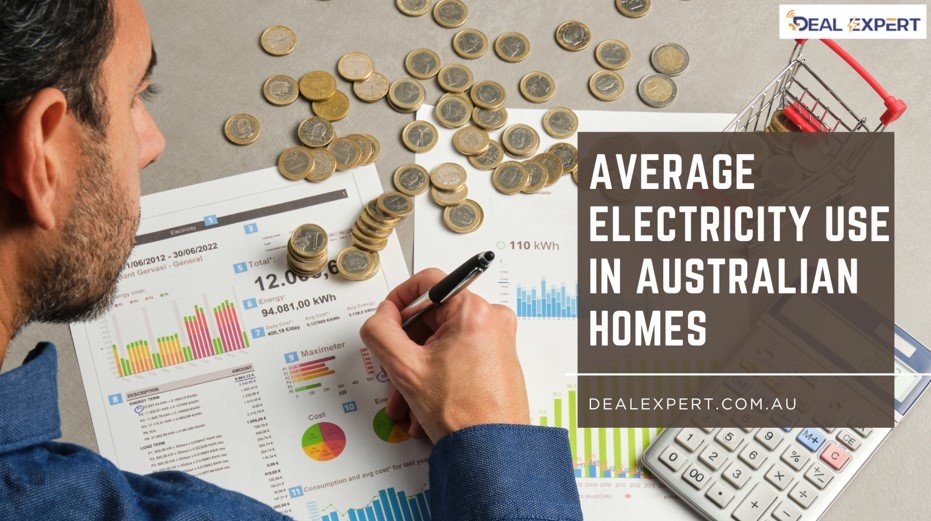
Average Electricity Use in Australian Homes
Understanding how much electricity your home actually uses is one of the best starting points to take control of your energy bills. Whether you’re in a one-bedroom unit or a busy family home, your usage patterns affect not just your costs but also what type of plan will suit you best. And if you’re a small business owner running operations from home or a shopfront, it’s just as important to understand how Small Business Electricity Rates work in comparison.
Let’s unpack what the average use looks like in Australian homes, what affects it, and how to find a plan that fits your actual needs.
How Much Electricity Does the Average Australian Home Use?
Most households in Australia use between 16 and 20 kilowatt-hours (kWh) of electricity per day. That works out to roughly 6,000 to 7,300 kWh each year. These are just averages; actual use can vary a lot based on the number of people in the home, the size of the house, and the appliances being used regularly.
| Household Type | Approx. Daily Usage | Approx. Annual Usage |
| Single-person home | 8 – 10 kWh | 2,900 – 3,650 kWh |
| 2–3 person household | 12 – 16 kWh | 4,400 – 5,800 kWh |
| Family of 4+ | 20+ kWh | 7,000+ kWh |
Homes with solar panels may use less grid electricity during the day, while others may rely heavily on the grid, especially during early mornings or at night.
What Factors Influence Household Electricity Usage?
A few common variables affect electricity usage across households in Australia:
- Climate:
Hotter states like QLD and NT see higher air conditioner use
Cooler states like VIC and TAS may use more heating
- Number of residents:
More people mean more devices, lighting, cooking, and washing
- Appliance type and efficiency:
Older or cheaper appliances usually draw more power
- Working from home:
Computers, monitors, lights, heating/cooling are used for longer hours
- Water heating systems:
Electric systems, especially on older tariffs, are major contributors
Electricity use tends to spike in the early evening when people return home and again during seasonal extremes (summer and winter), especially if heating and cooling are running for hours each day.
How Does Appliance Usage Add Up?
Here’s a basic look at how much power your appliances might be using.
| Appliance | Usage per Hour/Per Cycle | Notes |
| Fridge (365 days/year) | 1.5 – 2 kWh/day | Always running |
| Dishwasher | 1 – 2 kWh/cycle | Depends on water temp and settings |
| Washing machine | 0.5 – 1 kWh/cycle | Front-loaders are usually efficient |
| Dryer | 2 – 4 kWh/load | One of the biggest consumers |
| Air conditioner | 2 – 5 kWh/hour | Higher in older split systems |
| Electric oven | 2–3 kWh/hour | More when baking or roasting |
| Desktop computer setup | 0.2 – 0.5 kWh/hour | Add more for printers and monitors |
Even if each device doesn’t seem like much, using multiple at once and leaving things on standby can add up quickly.
What’s the Average Cost of Electricity Per kWh in Australia?
The average electricity cost per kWh in Australia varies by region. Here’s a snapshot based on Canstar’s 2025 data (source):
| State | Average Rate (kWh) |
| NSW (Ausgrid) | 36.7°C |
| VIC (CitiPower) | 26.4°C |
| QLD (Energex) | 33.7°C |
| SA (SA Power) | 44.1°C |
| TAS (TasNetworks) | 27.9°C |
| ACT (EvoEnergy) | 30.2°C |
These rates are usage charges. You’ll also pay a daily supply charge, which is the fixed cost to stay connected to the grid (typically $1.00–$1.20/day depending on provider and region).
Are You Using More Than You Should?
Here’s how you can check:
- Look at the kWh figures on your last bill
- Compare to your state’s average
- Use a smart meter or provider dashboard (if available)
- Review monthly or seasonal spikes
If your usage is average but your bill feels too high, your plan may not be competitive. That could be your sign to Switch Energy Supplier.
Do Energy Plans Match Your Usage Pattern?
Choosing the right plan isn’t just about picking the cheapest rate. You want a plan that matches your usage style.
| Usage Pattern | Best Plan Type |
| Daytime heavy use | Time-of-use or solar feed-in plan |
| Even usage all day | Flat rate |
| Large appliances at night | Controlled load or off-peak time options |
| Minimal daytime use | Plans with low daily charges |
To figure out the best fit, it helps to compare Energy Australia plans side by side. Look at how your usage habits match up with the plan features.
What Should Small Businesses Be Aware Of?
If you’re running a small business—whether from home, a shopfront, or a small office—your energy needs can be very different from a regular household.
- Equipment like display fridges, ovens, or machinery run longer hours
- Lighting and POS systems use constant background power
- Air conditioning may need to run all day
That’s why many providers offer small business electricity rates with commercial pricing structures.
These rates often come with:
- Higher usage allowances
- Option to negotiate rates (especially if your spend is consistent)
- Monthly billing for easier cash flow management
If your current provider doesn’t offer tailored business plans, it’s worth looking elsewhere—especially if you’ve grown or changed how your business runs.
Is It Worth Comparing Providers Right Now?
Yes—and here’s why:
- Plans and rates change every few months
- State-based rebates or seasonal price drops may not auto-apply
- New time-of-use or solar-hour plans are rolling out
- Some providers may offer better small business electricity rates
- You may be able to switch energy supplier without exit fees
| Compare These Factors | Why It Matters |
| Usage charge (kWh rate) | Affects every unit you use |
| Supply charge (daily) | Adds up across billing period |
| Plan structure | Flat vs variable vs solar-based |
| Contract conditions | Check lock-ins and penalties |
| Billing flexibility | Monthly, quarterly, or direct debit only? |
How Do You Find the Best Plan for Your Needs?
Here’s a simple 3-step approach:
- Know your usage: Review bills or smart meter data
- Check your region: Rates vary a lot by state and provider
- Compare side by side: Use online tools to Compare Energy Australia plans quickly
Don’t forget to double-check any fine print—especially if discounts only apply when you pay on time or sign up online.
What’s the Wrap on Electricity Use and Value?
The average Australian household uses around 16–20 kWh a day—but that doesn’t mean your bill has to look like everyone else’s. Knowing what you use and how much you’re paying for it is the first step to getting better value.
If you’re working from home or running a home business, check that you’re on a plan with suitable small business electricity rates.
And remember, if your plan doesn’t suit your needs anymore, it’s perfectly fine to switch energy supplier. Most providers will handle the process with no disruption.




